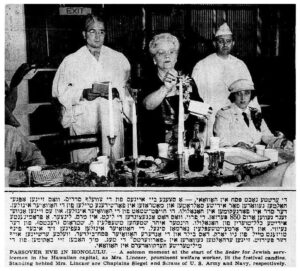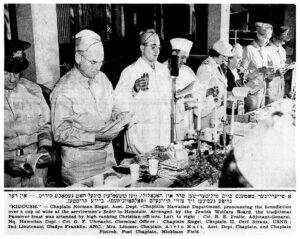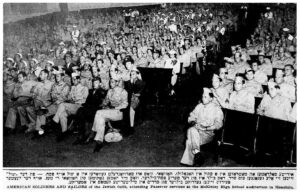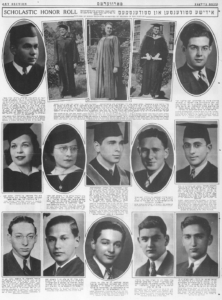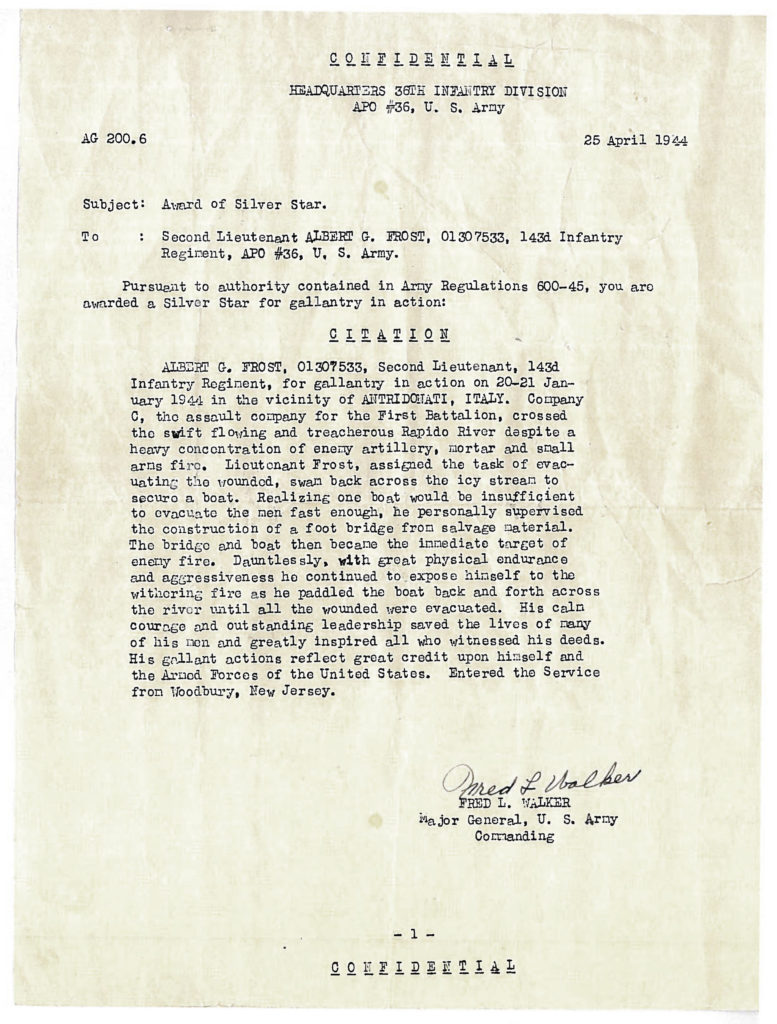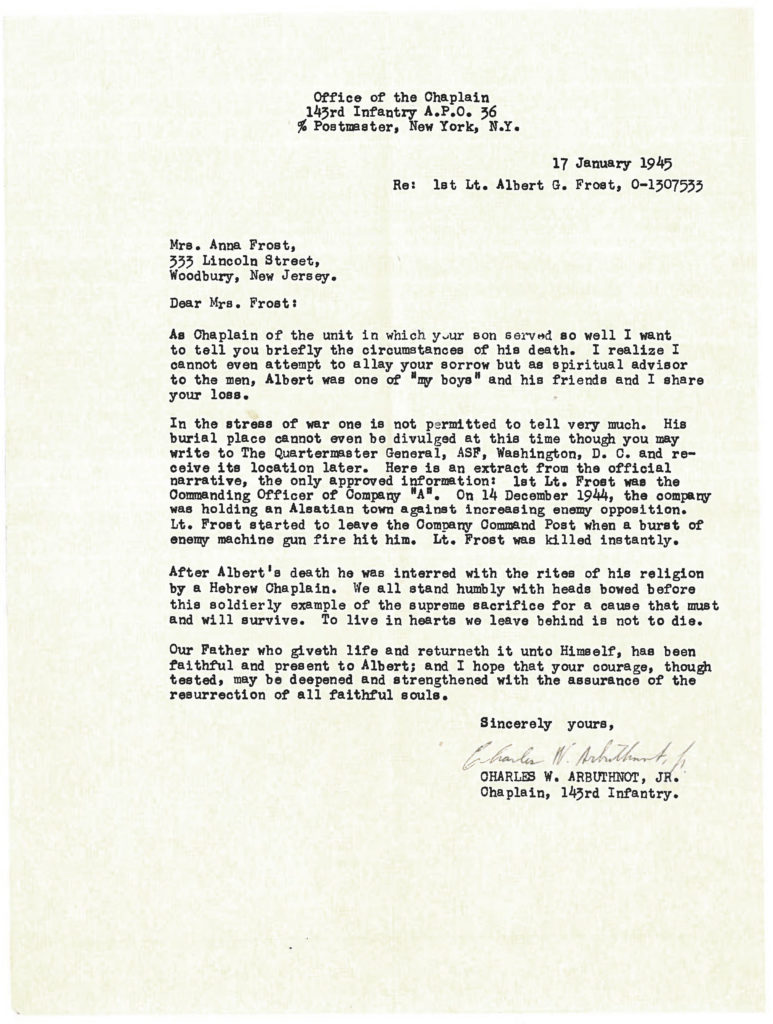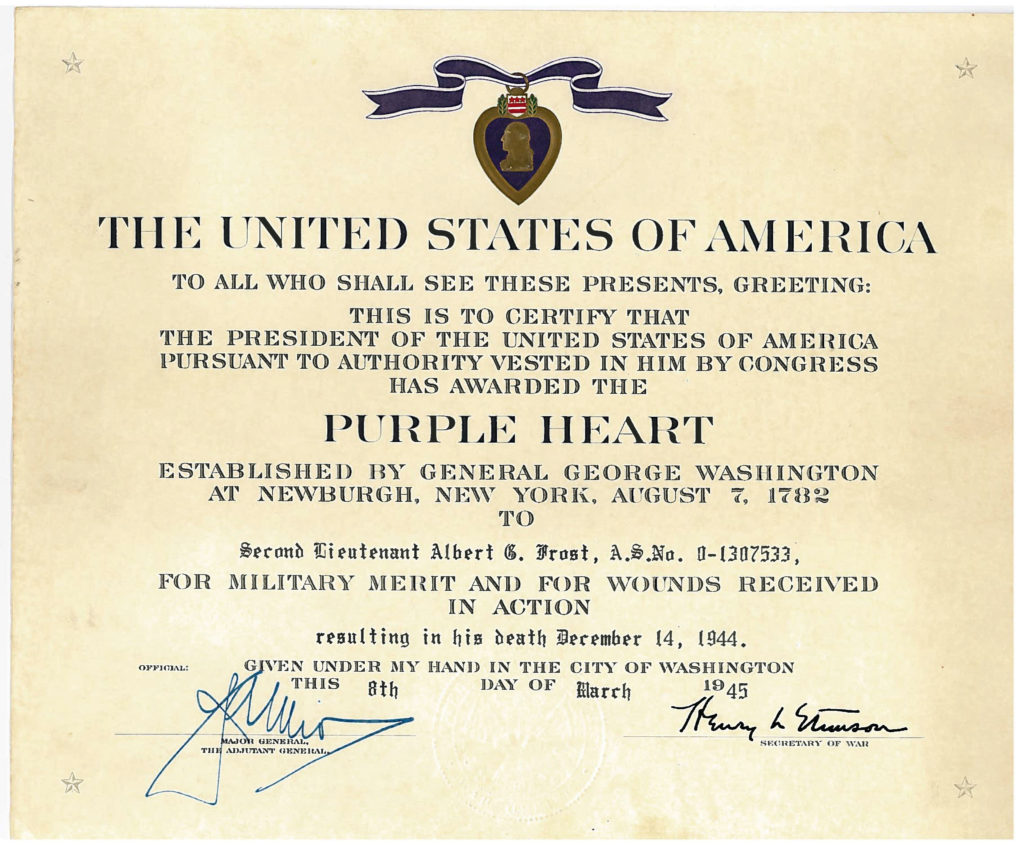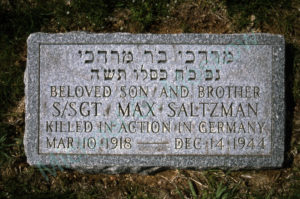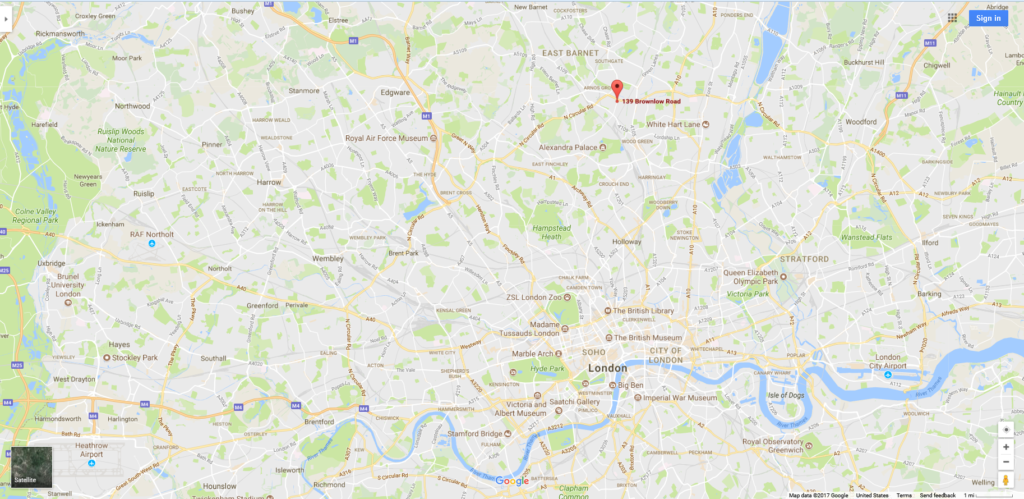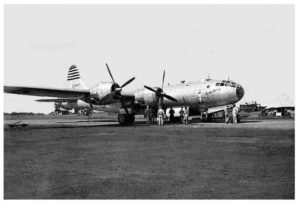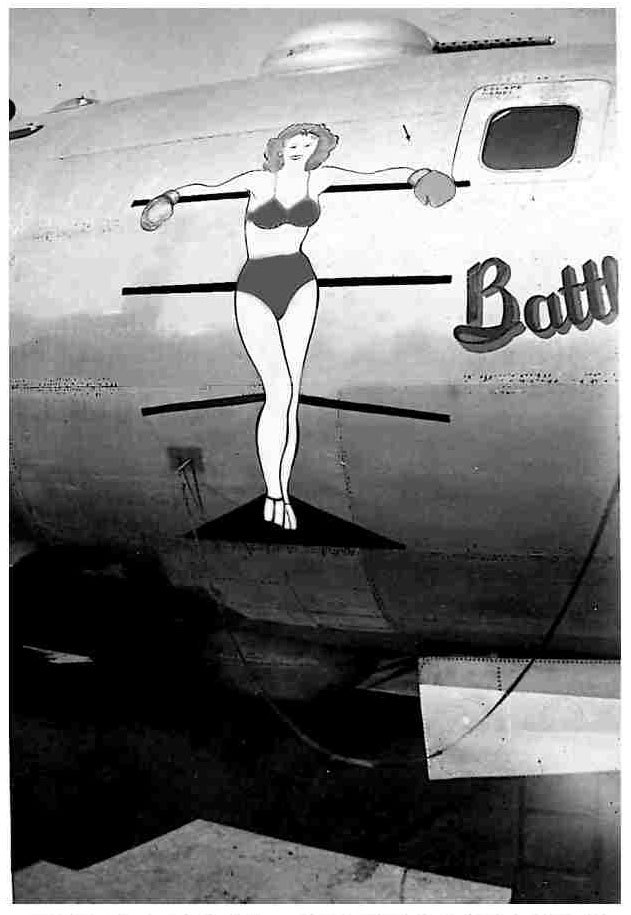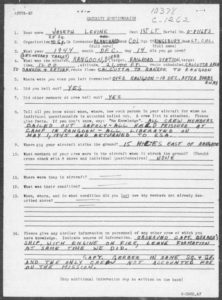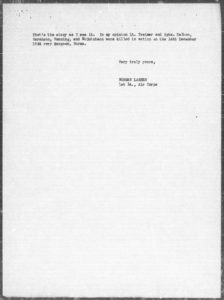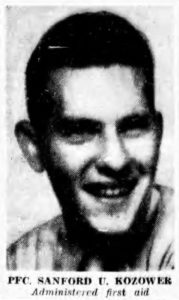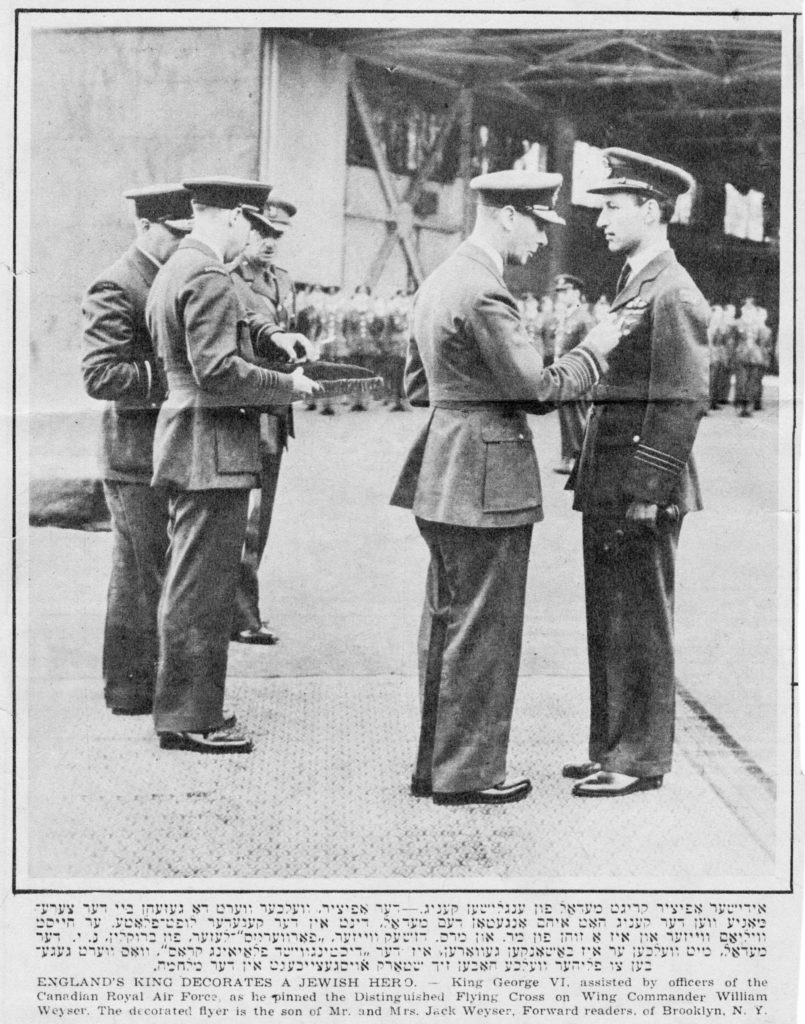Here’s a digression from the focus of most of my posts, which typically pertain to the military service of Jewish soldiers, sailors, and airmen: Instead, here’s a transcript of an essay that appeared in The Jewish Exponent that is (to engage in a double entendre!) rather pacific, both symbolically and geographically: It’s a social and cultural study of Jews and Jewish life in the (then) Territory of Hawaii, from almost eight decades ago.
Published on September 10, 1943, the article, by Army Chaplain Harry R. Richmond, mentions prominent Jews (or at least, people known to be Jews!) in Hilo and Kauai, and then moves on to a discussion of Jewish life in Honolulu, the center of Jewish life in the islands, where resided – at the time – fifty known Jewish families. He describes the community as being stratified into three social and cultural layers, in terms of their sense of identification – or lack thereof – with their heritage, let alone ongoing historical experience of the Jewish people as a whole.
While analytical, the tone of the essay is also critical if not subtly polemical, one of Chaplain Richmond’s assertions being, “These three layers of Honolulu Jewry have not yet found organic unity, or spiritual solidarity.” (Oh, that’s a mild one. He has even stronger things to say!)
The Chaplain then segues into a discussion of where (?) and how (?!) the Jews of Hawaii have thus far maintained a sense of community and followed religious observance. There’s no schul (in 1943, at least) as such, a Congregational Church providing the setting for a Jewish center. Only with the ironic advent of the Second World War has the J.W.B. (Jewish Welfare Board) become the effective and genuine hub of Jewish life in the islands – renting office space in a corner of the aforementioned Church – due to the simple fact that Jewish servicemen have become the largest group of Jews on the island, especially in the sense of participating in religious services.
This leads to a final question: Does the increasing social and organizational activity of the Jewish Welfare Board’s center portend a stronger, more vibrant Jewish community in the Islands? Chaplain Richmond seems to think so.
But, there’s more: The Chaplain’s essay mentions the Seders that were conducted for Jewish military personnel in 1942 and 1943. Pictures of the latter event were published in the May 9, 1943 issue of the Forverts (erev Pesach having occurred on the evening of Monday, April 19, 1943) and follow Chaplain Richmond’s Exponent essay. These pictures were featured in the Forverts’ photo section, which appeared as the final page of the newspaper’s weekday edition, but on Sundays – as per the May 9 issue – in the paper’s “Art Section” (Section 3), which typically comprised four or more pages.
Finally, a passing observation of the WW II-era Forverts…
An interesting aspect of this newspaper was revealed when I reviewed it for articles and photos of Jewish WW II servicemen, published between 1940 and 1946, of which there are very (very!) many. It soon became apparent that the Forverts had an intriguing policy – regarding English-language photo captions – of italicizing words pertaining to Jewish holidays, rituals, religious objects, and religious observance. And not only that. In many cases, a very short definition of these words – implying that they were unknown to the paper’s readership? – was included in the text.
I’ve no idea why a newspaper aimed at an Jewish audience – one would assume already intimately familiar with commonly known aspects Jewish religious practice? – would have followed such a policy.
Unless of course, even as long ago as the early 1940s, such awareness among the Jews of the United States was already waning.
Anyway, on to Chaplain Richmond’s essay…!
WAR WAKES UP HAWAIIAN JEWRY
Although Pearl Harbor is today one of the magic words in the American language, little is known among American Jews about the Jews of the Pacific resident in Hawaii. Chaplain Harry R. Richmond, only Jewish Chaplain who has served the American Army in two wars, here draws a sharp picture of the Jewish community of Hawaii, etching his background and throwing light on the impact that war has had.
JEWISH TRADITION finds comfort in the legend that the Lord prepares the balm before the bruise.
It can point to the emergence of the academy at Jabneh [Yavneh] before the fall of the Temple at Jerusalem; in the discovery of America before the expulsion from Spain; to the Balfour Declaration preceding the Nuremberg Proclamation for sustaining evidence. The realists among us might find a striking parallel elsewhere: even though, admittedly, in the reverse order. The might look at the destruction of Jewish communities in Europe and observe the emergence of Jewish life somewhere on the American Continent. Mexico, Porto Rico [sic], Santo Domingo are budding promises of new centers of Jewry in the Americas.
The Hawaiian Islands are perhaps another possibility.
The chain of islands in the vast ocean, truly called Pacific Paradise, is still virgin soil for the explorer, pioneer and adventurer, Jew or Gentile. As one of the new-comers to these islands, I confess, it is terra-incognita to most of us.
What is the outlook for increased Jewish life on these islands? The same as for any other American group, is the answer. The islands are not allergic to Jews. Yet it is strange that so few Jews made their homes here, Honolulu not excluded. In Hilo, the metropolis of Hawaii, the largest of the islands, only four Jews thus far have made their homes here, Honolulu not excluded: Mr. Louis Amiel, or Sephardic vintage, stems from Smyrna and is one of the leading merchants of the city. He is philanthropic, civic minded, orthodox. In the absence of a J.W.B. worker in that area he acts as their representative voluntarily, faithfully and most generously. Doctor Archie Orenstein, a fine physician, represents the other Jewish family in that city, in the island. He hails from San Francisco, he is distinguished in his profession. He is a credit of his people and country. Two more: Miss Fussfeld and Mr. Ziff complete the Jewish quarter at Hawaii. The Jewish population of Kauai is one-fourth that of Hawaii, there being only one Jew on that island, Mr. Martin Dreyer, who reached these islands from his native Germany. During the 30 years or more he lived in Kauai, he prospered, occupied offices of trust and honor, including that of postmaster of Lihue, and won a distinguished name in the community. The last two Seder Services, conducted for the American servicemen there in 1942 and 1943, represented his first contact with Jewish life in his 30 years in Kauai. Dr. and Mrs. Benjamin Shapiro, Mr. Hyman Meyer, and Mr. Hyman Wachs, of Mauai, complete the roster of Jews for that island. The islands of Molokau and Lanai have no Jews.
It is the City of Honolulu, in the island of Oahu, that may lay claim to Jewish community life.
Three Layers of Jews
Two years ago and more, when I first came here, Mr. I. Weinstein, then J.W.B. director of this area, for a decade and more, informed me that the Jewish population of Honolulu numbered about 50 families. Collectively they exhibited a pattern of Jewish life not uncommon to America. They represented there, as similar groupings elsewhere, three social levels peculiar to the stream of American Jewry: The first and oldest group, properly styled by Prof. Salo Baron perverted Marranos, numbered the few who succeeded to remove consciously every vestige of Jewish consciousness. By marital ties, economic penetration and social solidarity, they have burned all the bridges of a people behind them, and integrated successfully with the tradition and outlook of their newly found homeland. That some Jews still consider them their own is the tragic admission of the weakness of a people. Those who drown will hold fast even to a straw. The second class represents those Jews who are tradition-bound. They constitute the bulk of the Jewish community here. In the main they are American Jews from the Western Coast; they gave up cultural San Francisco for green pastures in Honolulu. If the first layer of Honolulu Jewry is representative of western Europe, in origin and culture, the second layer is East European, in character and background. The third layer, a small minority, embraces those Jews completely “emancipated” from traditional ties, from diaspora dreams, from Hebrew heritage. In that group you will usually find the most productive minds, the most energetic spirits, the most zealous in pursuit and practice of a noble excuse. They gave a cosmopolitan complexion, a world contour, a universalistic pose. Nothing human is alien to them – except Jews or Judaism. The sorrow of every group is their first sorrow; the needs of a people in a far and distant land has urgent claim upon them; for the sovereignty of a submerged race they will sacrifice their lives; but of the dignity of their own people they will have nothing. They are Israel’s cosmopolitan isolationists.
These three layers of Honolulu Jewry have not yet found organic unity, or spiritual solidarity. One of the oldest Jewish settlers here, Jules Levy, erstwhile chairman of the J.W.B. Hawaiian area, is still waiting for the emergence of organized Jewish life here, after nearly half a century of residence in Honolulu. Apparently, the Jewish dead in Honolulu fare better. Ground was recently acquired and a cemetery consecrated for the burial of Mr. Max Lewis: the first Jewish dead to be buried in a Jewish cemetery in these Hawaiian Islands. The living, however, still feed on indifference, intermarriage and much ignorance. Always and everywhere such tendencies threaten the body politic of Israel. Here they constitute a danger point: because no constructive positive program or conserving agencies exist to offset these undermining influences. Elsewhere the devastating microbes are dissolved and neutralized by the healthy corpuscles of a vital organism; here the pernicious germs riot on a body empty of life blood. Negative tendencies inevitably rise to the surface when positive values are in absentia. Synagogal leadership, congregational organization and community interest are still to come, to Honolulu.
The modicum of Jewish life I met, in my early days here, was associated with the Center group. Organized primarily to serve the social proclivities of the tired businessman, it acquired a home to serve that purpose. An unpretentious Congregational Church, house in a very modest wooden frame, raised on a high basement, situated in an isolated spot, neither in the heart of the city, nor in a suburban area, became the home of the Jewish center. The Bnai-B’rith, the only fraternal Jewish organization in Honolulu, began to meet there. The J.W.B., through its representative, rented office space in one corner of the building, used the hall for religious services and the basement for social functions for the Jewish servicemen in the department. The military personnel being the largest group of Jewish men on the island, naturally became the life of the party at the center, especially during festivals and holy days.
In the course of time, obviously, the J.W.B. premises became the hub of Jewish life in Honolulu, and its director, the official Jewish leader in the community. Jewish life in Honolulu, before December 7th, was a minus quantity rather than a positive influence. The Jewish community had its proportionate share of physicians, lawyers and merchants, men of repute and achievement, but little of inspiring leadership. And the absence of it, admit it or not, had a telling effect upon Honolulu Jewry.
Honolulu Jews
It is natural to ask for the circumstances that so shaped Honolulu Jewry. The newcomer, with all deference to the old settlers in the community, is tempted to ask why Honolulu Jewry has achieved less organically than similar groups elsewhere. Negative and positive factors contributed to its singular position. First among the negative influences is the insularity of Honolulu. The metropolis of the Hawaiian Islands is virtually isolated and cut off from the Mainland by five days’ distance to San Francisco. Honolulu, by its geographical position, has no contact with the many turbulent, tortuous and mercurial aspects of Jewish life in America or Europe. It is not linked with the main streams of Jewish life anywhere. What American Jewry feared would overtake it, should immigration of East European Jewry be restricted, is already a fait accompli in Honolulu. Honolulu Jewry, not because of exclusion acts, but chiefly because of natural barriers, is completely isolated from world Jewry. A spiritual self-sufficiency Honolulu has not. Next to insularity I would consider the insufficiency of numbers. At a recent J.W.B. meeting it was disclosed that the directorate of the Jewish community center has not met in the past 12 months. But even that seemed quite plausible in the light of the fact that the entire membership of the Center is exactly one dozen. When plans for the high holy days were considered a few days ago, 25 seats were considered enough for the Honolulu Jewish community. Obviously, when the numbers are so thin, so widespread and scattered, organized mass community work is well-nigh prohibitive. Perhaps the strongest factor militating against Jewish life in Honolulu is the absence of the irritating itch of anti-Semitism. There is no anti-Semitism in Hawaii. There being no scorpions in Honolulu to remind us that we are Jews, we are tempted to forget that we are children of a martyr race. The sum of it explains the absence of the positive factor supremely essential in organized Jewish life. It is the will to live organically as a Jewish community. Where that is present all else follows. For where there is a will there is a way.
War Brings Changes
Much has changed since December 7th, and the status of the Jewish community changed correspondingly. In the exodus that followed that day there were many of the Jewish community. War workers and civilian defense projects have no doubt increased the Jewish population here, but the evacuees have not been replaced. They were the residents; the new arrivals are transients. They are here for the duration, or emergency. Jewish servicemen, too, in all branches of the armed services, have increased proportionately. But facilities to serve them fittingly are still to come. The only evidence of Jewish communal effort is still only at the Jewish community center, on Sunday, at 11 o’clock in the morning. At that time the Jewish Center groups plays host to the Jewish servicemen attending religious services in the center. The services are conducted jointly by Jewish chaplains of the Army and Navy. After the services, the men meet downstairs, in the assembly room, where refreshments are served by the hostesses of the Jewish community and the J.W.B.
The efforts of the Jewish community, however, must not be limited by the Sunday morning service. There is a promising change that augurs well for greater effort in the future. With the recent arrival of Mr. Maurice Schneirov, Director, J.W.B., Hawaiian Area, a spirit of cooperation has begun to make itself manifest in Jewish circles here. It became fully evident in the recent Jewish Welfare Drive here. The quota sought was over-subscribed most generously.
To predict the post-bellum nature of the Jewish community here, not even a prophet would dare. It is no more safe to hazard the nature of the Jewish community in post-war Honolulu than that of post-war Junction City, Kans. Many midwestern towns that were empty of Jews five years ago, now that their seams have burst because of the influx of defense workers, are housing many Jews. Will the Jews take root in those town and prosper, as Jewish communities, long after the hectic days are over?
No one knows!
But the odds are in favor of Honolulu.
______________________________
Leaving the Exponent and moving forward to the Forverts, here’s the first page of the paper’s Art Section in the May 9, 1943, issue, with the five photos of the April, 1943 Pesach service appearing below the fold…
_________________________
…and, the composite of the photos.
_________________________
The photos, one by one, with the English-language caption appearing below each image…
PRAYER FOR FREEDOM AT THE CELEBRATION OF A JEWISH FREEDOM FESTIVAL. – Chaplain Norman Siegel, USA, pictured during Passover services in the auditorium of McKinley High School. A ceremonial dinner, known as the Seder, climaxed the services marking the anniversary of our ancestors’ deliverance from servitude in Egypt.
_________________________
“ELI, ELI.” – A singing sailor renders a popular Hebrew melody at the Passover feast held in Honolulu’s McKinley High School. This was one of the twelve Sedorim conducted in the Hawaiian Department. About 850 persons attended.
_________________________
PASSOVER EVE IN HONOLULU. – A solemn moment at the star of the Seder for Jewish servicemen in the Hawaiian capital, as Mrs. Linczer, prominent welfare worker, lit the festival candles. Standing behind Mrs. Linczer are Chaplains Siegel and Straus of U.S. Army and Navy, respectively.
_________________________
“KIDDUSH.” – Chaplain Norman Siegel, Asst. Dept. Chaplain Hawaiian Department, pronouncing the benediction over a cup of wine at the servicemen’s Seder in Honolulu. Arranged by the Jewish Welfare Board, the traditional Passover feast was attended by high ranking Christian officers. Left to right: Col. R.E. Fraile, Adjutant-General, Hq. Hawaiian Dept.; Col. G.F. Unmacht, Chemical Officer; Chaplain Siegel, Chaplain H. Cerf Straus, USNR; 2nd Lieutenant Gladys Franklyn, ANC.; Mrs. Linczer, Chaplain Alvin Katt, Asst. Dept. Chaplain and Chaplain Pietrek, Post Chaplain, Hickham Field.
_________________________
AMERICAN SOLDIERS AND SAILORS of the Jewish faith, attending Passover services at the McKinley High School auditorium in Honolulu.
_________________________
_________________________
Some Links of Note (contemporary Jewish life in Hawaii)
Chabad Jewish Center of the Big Island
The Jewish Community of Maui, Hawaii
Jewish Community Services in Hawaii
Jewish Life In An island Paradise, at YNetNews
Hawaii-Israel Cooperation, at Jewish Virtual Library





